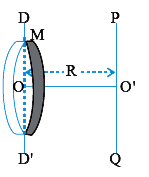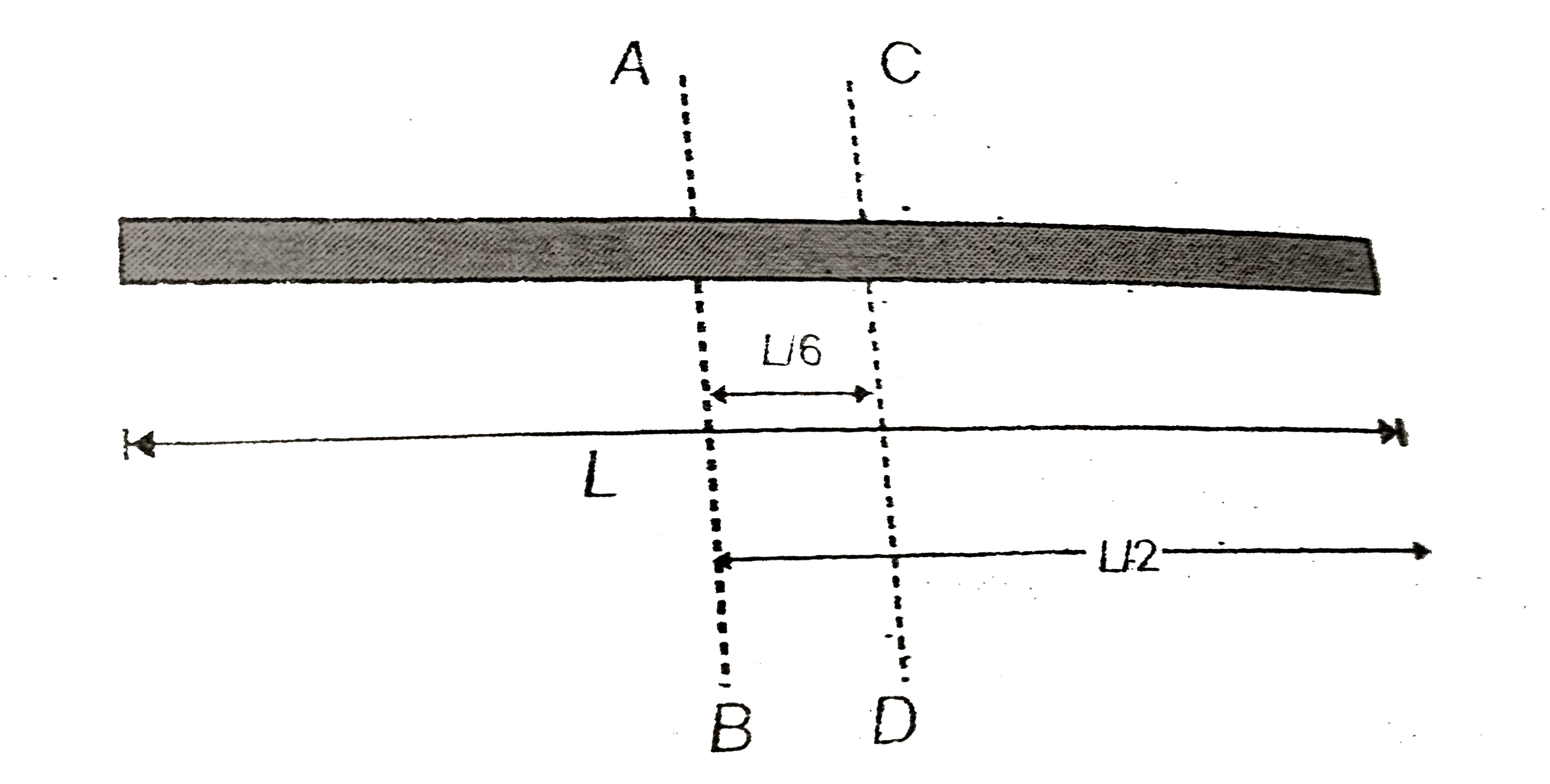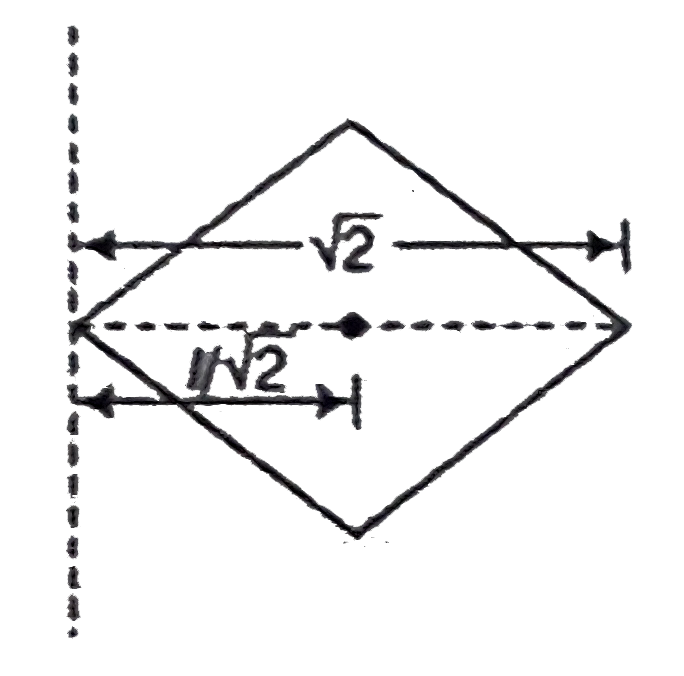The moment of inertia of a uniform cylinder of length landradiusR about its perpendicular bisector is I. What is the ratio l/R such that the moment of inertia is minimum ?
4.5 cm
1.5cm
6.0cm
3.0cm
The correct Answer is:D
To find the ratio lR such that the moment of inertia of a uniform cylinder about its perpendicular bisector is minimized, we can follow these steps:
Step 1: Write the expression for the moment of inertia
The moment of inertia I of a uniform cylinder about its perpendicular bisector is given by the formula:
I=mR24+ml212
where m is the mass of the cylinder, R is the radius, and l is the length of the cylinder.
Step 2: Express mass in terms of density and volume
The mass m can be expressed in terms of the density ρ and the volume V:
m=ρV
For a cylinder, the volume V is given by:
V=πR2l
Thus, we can write:
m=ρπR2l
Step 3: Substitute mass into the moment of inertia equation
Substituting m into the moment of inertia equation:
I=ρπR2lR24+ρπR2ll212
This simplifies to:
I=ρπR4l4+ρπR2l312
Step 4: Factor out common terms
Factoring out ρπl:
I=ρπl(R44+l2R212)
Step 5: Differentiate with respect to l
To find the minimum moment of inertia, we differentiate I with respect to l and set the derivative equal to zero:
dIdl=ρπ(R44+l2R212)+ρπl(ddl(R44+l2R212))=0
Calculating the derivative:
ddl(R44+l2R212)=2lR212=lR26
Thus:
dIdl=ρπ(R44+l2R212)+ρπl(lR26)=0
Step 6: Set the derivative to zero and solve for l
Setting the derivative to zero:
R44+l2R212+l2R26=0
Combining terms:
R44+l2R24=0
This leads to:
R4+l2R2=0
Step 7: Solve for the ratio lR
From the previous step, we can derive:
l2=3R22
Taking the square root gives:
lR=√32=√1.5
Final Answer
The ratio lR such that the moment of inertia is minimized is:
lR=√1.5
The moment of inertia I of a uniform cylinder about its perpendicular bisector is given by the formula:
I=mR24+ml212
where m is the mass of the cylinder, R is the radius, and l is the length of the cylinder.
The mass m can be expressed in terms of the density ρ and the volume V:
m=ρV
For a cylinder, the volume V is given by:
V=πR2l
Thus, we can write:
m=ρπR2l
Substituting m into the moment of inertia equation:
I=ρπR2lR24+ρπR2ll212
This simplifies to:
I=ρπR4l4+ρπR2l312
Factoring out ρπl:
I=ρπl(R44+l2R212)
To find the minimum moment of inertia, we differentiate I with respect to l and set the derivative equal to zero:
dIdl=ρπ(R44+l2R212)+ρπl(ddl(R44+l2R212))=0
Calculating the derivative:
ddl(R44+l2R212)=2lR212=lR26
Thus:
dIdl=ρπ(R44+l2R212)+ρπl(lR26)=0
Setting the derivative to zero:
R44+l2R212+l2R26=0
Combining terms:
R44+l2R24=0
This leads to:
R4+l2R2=0
From the previous step, we can derive:
l2=3R22
Taking the square root gives:
lR=√32=√1.5
The ratio lR such that the moment of inertia is minimized is:
lR=√1.5
Topper's Solved these Questions
Similar Questions
Find the moment of inertia of a uniform ring of mass M and radius R about a diameter.
View SolutionMoment of inertia of a circular wire of mass M and radius R about its diameter is
View SolutionWhat is the moment of inertia of a solid sphere of density ρ and radius R about its diameter ?
View SolutionThe moment of inertia of a ring of mass M and radius R about PQ axis will be

View SolutionWhat is the moment of inertia of solid sphere of density ρ and radius R about its diameter ?
View SolutionThe moment of inertia of a door of mass m, length 2l and width l about its longer side is.
View SolutionThe moment of inertia of a thing uniform rod of length L and mass M, about axis CD (as shown in figure) is

View SolutionThe moment of inertia of a system of four rods each of length l and mass m about the axis shown is

View SolutionThe moment of inertia of a uniform semicircular wire of mass 'M' and radius 'r' about a line perpendicular to the plane of the wire through the center is
View SolutionThe moment of inertia of a uniform semicircularwire of mass M and radius r about a line perpendicular to the plane of the wire through the centre is :
View Solution
